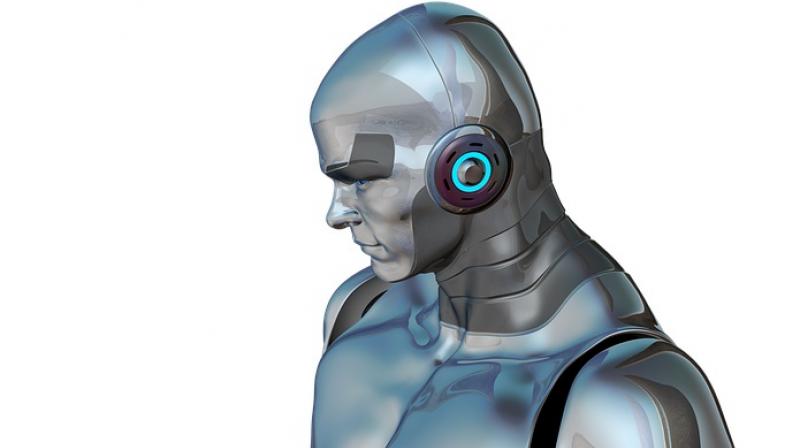How California cops use robots
Police in California is using robots to crack down on drugs by crawling through social media posts.

Police in California is using robots to crack down on drugs by crawling through social media posts. Chicago police are using sensors, big data, machine learning and predictive analytics to help combat the gun crime plaguing the city by trying to predict it before it happens. 49 per cent and a 66 per cent reduction respectively, in shootings in February and March 2017 was noticed in two places where the technology was deployed. China is developing an advanced Crime Detection System out of its extensive surveillance network. Kanagawa police in Japan have tested a revolutionary method of anticipating crimes and accidents using AI and is intending to use it during the 2020 Olympic Games in Tokyo.
India too has also resolved to jump into the predictive policing bandwagon. Advanced Data Research Institute (ADRIN) is reportedly developing software which will help law enforcement agencies map crime patterns and fix hot spots. National Crime Records Bureau, (NCRB) is reported to have signed a memorandum of understanding with ADRIN. NCRB initially aims to facilitate predictive policing systems in five states — namely, Kerala, Odisha, Maharashtra, Haryana and Tripura.
In 2016, Delhi police joined up with Indian Space Research Organisation (ISRO) and developed a predictive policing tool called Crime Mapping Analytics and Predictive System (CMAPS).
Maharashtra government intends to come out with a predictive policing policy. The Jharkhand police force similarly has ventured to implement an analytical system with the help of IIM Ranchi, which would evaluate criminal data to predict crime-prone zones and Naxal prone areas.
In 2016 researchers reverse engineered the algorithms of predictive policing software of California called Predpol and discovered that it discriminated against communities of colour.
Charges of racial and other socio-economic bias can arise out of predictive policing as police resources get concentrated in areas which have disadvantaged and beleaguered populations. That’s the reason why some cities have turned away from implementing predictive policing.
In places where a lot of crime occurs but few reports are made, Data-driven policing can lead to under-enforcement and in places where people are likely to call the police at a drop of hat, excessive enforcement may result which is a wastage of resources. Besides, algorithms that have been developed have never been made available for scrutiny, as originators of algorithms argue that their technology is a trade secret and disclosing it would damage the business.
Police records all over India are being digitised under the Crime and Criminal Tracking Network and Systems (CCTNS). Tamil Nadu enjoys the distinction of being the first state to digitise police records such as the inquest report, arrest card, seizure manager, arrest card etc. The ultimate aim of the entire exercise points at the integration of police, judicial and jail records.
To introduce Predictive policing in the entire country we need the exchange of information between neighbouring police stations, districts and states. This seems a little elusive at the moment as some of the segregated law enforcement arms of the state in our country are yet to be connected.
At this juncture, State Crime Records Bureau (SCRB) of Tamil Nadu has available with it digitised data for the last 5 years. If Tamil Nadu wishes to opt for Predictive policing, it can very well do, like the Jharkhand Police and Delhi Police did without depending on the NCRB.
Under the circumstances, should we embrace or ignore Predictive policing is the big question. Big data can revolutionise policing, solve police crime and enhance police accountability and oversight but simultaneously it can mask, reify, and reinforce discriminatory bias and be a threat to privacy and constitutional rights of the citizens. This downside wouldn’t, however, apply to road safety data, where predictive policing could be a game changer in drastically reducing road accidents thereby saving thousands of lives every year.
In the sci-fi film ‘Minority Report’, the mutant cyborgs come to a conclusion that the film’s protagonist played by Tom Cruise will commit a murder. While trying to prove his innocence, Cruise realises that the PreCrime unit is corrupted from the inside to serve the interests of certain individuals. Hence algorithms in pre-crime units cannot be treated as infallible. If machines are trained on biased data they too will become biased, in which case it can easily lead to discriminatory policing patterns.
The predictive policing methods used today are in adolescence rather than infancy, so in my opinion, the implementation of big data policing begs for thoughtful reflection and public discussion before the actual leap.
(The author Dr K.Jayanth Murali, an IPS officer, is Director DVAC, Chennai)

